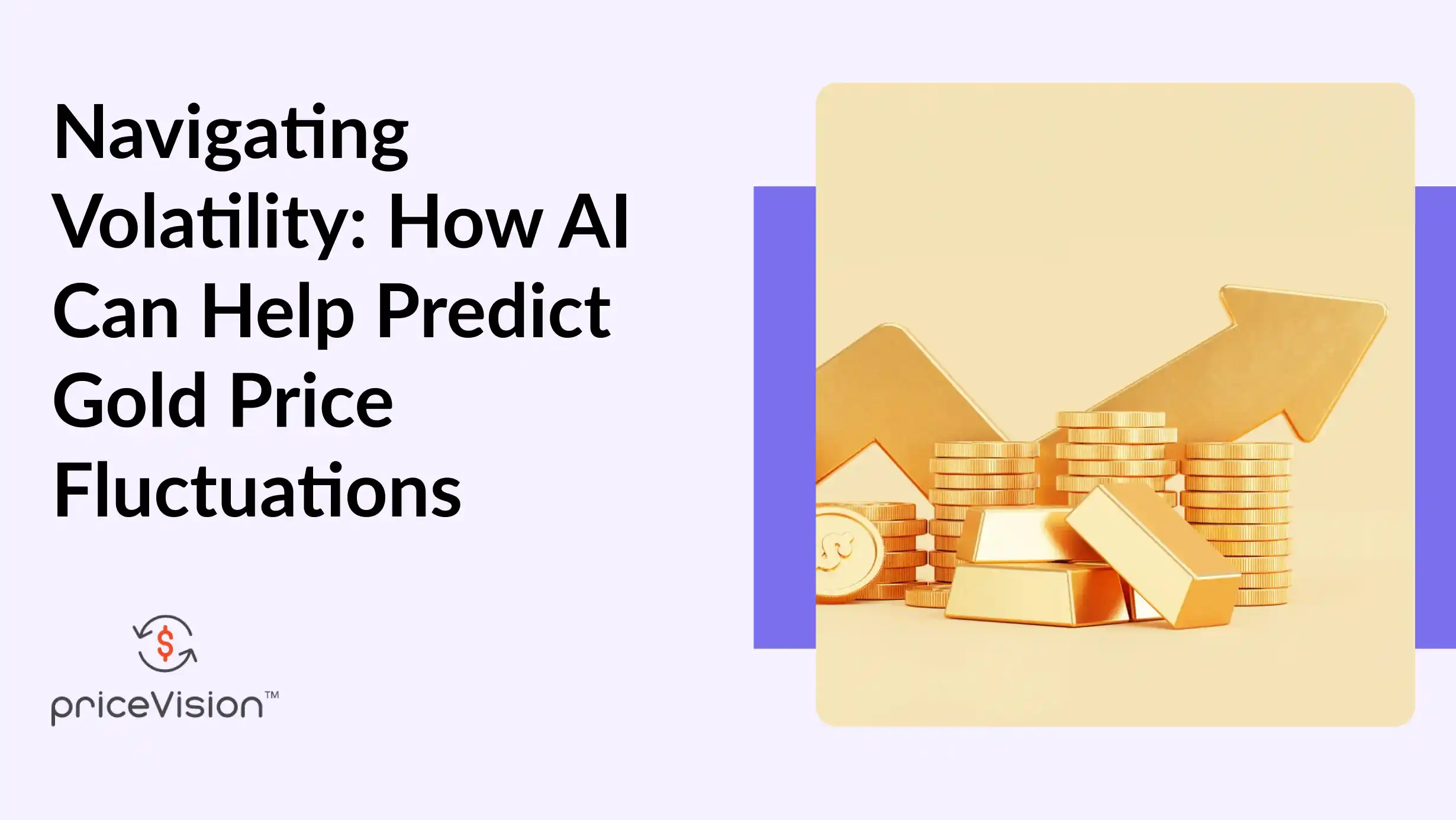Navigating Volatility: How AI Can Help Predict Gold Price Fluctuations

Gold has long stood as a bastion of stability and a hedge against economic turbulence in the investment world. However, precious metal prices are anything but static. They are influenced by an intricate web of global factors that can turn the market on its head overnight. Enter the digital age, where Artificial Intelligence (AI) emerges as a beacon of hope. It is promising to cut through the complexity and offer predictions with unprecedented precision.
This journey into the fusion of AI and gold price forecasting highlights the technological marvels shaping our financial strategies. It also underscores a pivotal shift toward a future where data reigns supreme.
What Drives Gold Price Volatility?
Gold has always been attractive. But gold prices change a lot. Many different things can affect gold prices. These include big economic signals like inflation and interest rates, and changes in how much currencies are worth. These fluctuations in prices aren't just something for traders to worry about. It shows how countries' economies are linked together and how unpredictable things can be. The usual ways of analyzing gold prices are helpful, but they don't always catch everything that influences prices. So, investors are looking for better tools to understand these changes.
How Is AI Revolutionizing Financial Forecasting?
The advent of AI in financial forecasting marks a revolution, not an evolution. This isn't about incremental improvements but a wholesale transformation in how we analyze and predict market movements.
AI, with its ability to digest and discern patterns from vast datasets, offers a lens to view market dynamics in a way that was previously inconceivable. This leap forward is not just about harnessing technology for the sake of innovation; it's about unlocking insights that are deeply embedded in data, insights that traditional methods can no longer excavate alone.
What Techniques Does AI Use to Predict Gold Prices?
AI doesn't come with a one-size-fits-all solution; it brings an arsenal. Machine learning models stand at the forefront, learning from historical data to predict future price movements. These models aren't static; they evolve, adapting to new data to refine their predictions. Then there's time-series analysis, a method that looks at sequences of price data over time to forecast future trends. But perhaps the most intriguing tool is sentiment analysis. By sifting through news, social media, and financial reports,
AI can gauge the market's mood, offering insights into how public perception can sway gold prices. This trifecta of techniques embodies the depth and breadth of AI's capabilities in navigating the complexities of the gold market.
What Challenges Does AI Face in Predicting Gold Prices?
However, the path AI paves is not devoid of hurdles. The quality of data is paramount; flawed data sets can lead AI astray, rendering predictions inaccurate. Moreover, the financial market's complexity requires that AI models be continually refined to avoid overfitting—where a model is too closely tailored to past data, losing its predictive power. These challenges underscore the importance of vigilance and continuous improvement in the realm of AI-driven forecasting.
What Is the Future of AI in Gold Price Forecasting?
The horizon is promising for AI in gold price forecasting. With each advancement in AI technology, from deep learning to neural networks, the precision of predictions improves. These technologies are not just evolving; they're converging, creating a more integrated approach to forecasting that can more adeptly navigate the nuances of the gold market.
This isn't just about predicting prices more accurately; it's about reshaping the landscape of investment strategy, making it more informed, more nuanced, and ultimately, more effective.
How Is AI Shaping the Future of Investment Strategy?
The integration of AI into the realm of gold price prediction is more than a technical achievement; it's a paradigm shift. This new era of data-driven investment strategy doesn't just enhance our ability to forecast; it transforms our relationship with market volatility. With AI, investors can approach the gold market with a level of insight and confidence that was previously unattainable.
This transformation is not just about the sophistication of the tools at our disposal; it's about a fundamental change in how we perceive and react to the dynamics of the gold market.
A Sneak-Peek into the Data-Driven Future of Investing
As we stand on the cusp of this new era, it's clear that the fusion of AI and investment strategy is not just a passing trend. It is rather the blueprint for the future. The journey of integrating AI into gold price prediction is emblematic of a broader move towards leveraging technology to make more informed, strategic decisions in the financial world. This shift is not just about adapting to new technologies. It's about embracing a future where data is not just a tool but the cornerstone of investment strategy.
Conclusion
The combination of Artificial Intelligence (AI) with the task of predicting changes in gold prices marks a major advancement in the finance world. This shift moves us away from the old, often slow-to-react investment methods. Now, we're heading towards a strategy that relies on data to make smart decisions before things happen. As AI technologies improve, their role in forecasting gold prices and analyzing the broader financial markets is expected to increase. This marks the beginning of a new era in investing.
In this era, we not only look ahead but also gain a deeper insight into how markets behave. The future of gold investments, which used to be hard to predict, seems a bit clearer with AI's assistance. This brings us to a point where navigating the unpredictable waters of gold investments is made somewhat easier by the guiding hand of AI. It introduces a sense of predictability and strategic foresight into an arena known for its volatility.